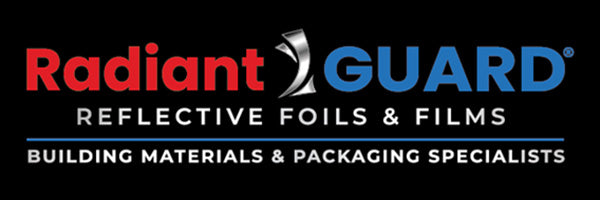For an attic space, our recommended installation method for radiant barriers is stapled to the underside of the roof rafters. If you choose to install over the attic floor, keep in mind that condensation may form under a perforated radiant barrier based on sudden extreme temperature differences between the air below the barrier and above the barrier typically found in colder climates in the winter.
If you do stumble across condensation underneath your perforated radiant barrier, you can pull back a few sections of the barrier to increase the air flow to the underside of the barrier to help your ventilation system carry out the moisture.
*** The following text is excerpted from the Oak Ridge National Laboratory Radiant Barrier study.
Condensation of moisture can be a concern when a radiant barrier is installed on the attic floor directly on top of conventional insulation. During cold weather, water vapor from the interior of a house may move into the attic. In most cases, this water vapor will not cause any problem because attic ventilation will carry excess vapor away. During cold weather, a radiant barrier on top of the insulation could cause water vapor to condense on the barrier's underside.
Condensation of large amounts of water could lead to the following problems: 1) the existing insulation could become wet and lose some of its insulating value, 2) water spots could appear on the ceiling, and 3) under severe conditions, the ceiling framing could rot.
Some testing has been performed to determine the potential for moisture condensation with perforated radiant barriers laid on top of the insulation. A test was conducted during the winter near Knoxville, Tennessee, using houses that were operated at much higher-than-normal indoor relative humidity. Since this testing did not reveal any significant moisture condensation problems, it is expected that moisture condensation will not be a problem in climates warmer than that of Knoxville. Further testing of radiant barriers is needed to determine if moisture condensation is a problem in climates colder than that of Knoxville.
Preventing Moisture Issues
One precaution for preventing potential moisture problems is the use of perforated or naturally permeable radiant barriers. The higher the perm rating, the less potential for problems. Avoiding high indoor relative humidity, sealing cracks and air leaks in the ceiling, using a vapor retarder below the attic insulation, and providing for adequate attic ventilation are additional precautions.
One precaution for preventing potential moisture problems is the use of perforated or naturally permeable radiant barriers. The higher the perm rating, the less potential for problems. Avoiding high indoor relative humidity, sealing cracks and air leaks in the ceiling, using a vapor retarder below the attic insulation, and providing for adequate attic ventilation are additional precautions.
Attic ventilation is also an important consideration. With adequate ventilation, radiant barriers will perform better in summer and excess water vapor will be removed in winter. Unfortunately, specific recommendations for the best type and amount of attic ventilation for use with radiant barriers are not available. Model building codes have established guidelines for the amount of attic ventilation area per square foot of attic floor area to minimize the occurrence of condensation. These guidelines specify one square foot of net free ventilation area for each 150 square feet of attic floor area. This ratio may be reduced to 1 to 300 if a ceiling vapor retarder is present or if high (for example, ridge or gable vents) and low (soffit vents) attic ventilation is used. Since part of the vent area is blocked by meshes or louvers, the net free area of a vent is smaller than its overall dimensions.



